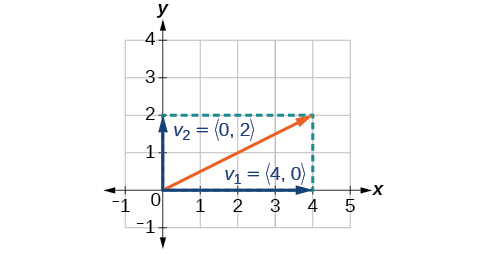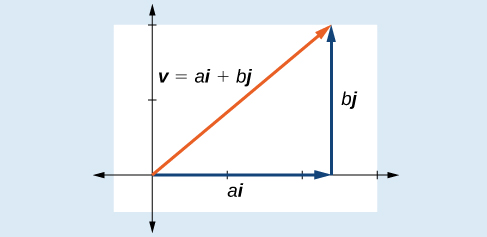| << Chapter < Page | Chapter >> Page > |
We also have v 2 with initial point and terminal point
Therefore, the position vector is
Using the Pythagorean Theorem, the magnitude of v 1 is 2, and the magnitude of v 2 is 3. To find the magnitude of v , use the formula with the position vector.
The magnitude of v is To find the direction, we use the tangent function

Thus, the magnitude of is and the direction is off the horizontal.
Find the components of the vector with initial point and terminal point
First find the standard position.
See the illustration in [link] .

The horizontal component is and the vertical component is
In addition to finding a vector’s components, it is also useful in solving problems to find a vector in the same direction as the given vector, but of magnitude 1. We call a vector with a magnitude of 1 a unit vector . We can then preserve the direction of the original vector while simplifying calculations.
Unit vectors are defined in terms of components. The horizontal unit vector is written as and is directed along the positive horizontal axis. The vertical unit vector is written as and is directed along the positive vertical axis. See [link] .

If is a nonzero vector, then is a unit vector in the direction of Any vector divided by its magnitude is a unit vector. Notice that magnitude is always a scalar, and dividing by a scalar is the same as multiplying by the reciprocal of the scalar.
Find a unit vector in the same direction as
First, we will find the magnitude.
Then we divide each component by which gives a unit vector in the same direction as v :
or, in component form
See [link] .

Verify that the magnitude of the unit vector equals 1. The magnitude of is given as
The vector u i j is the unit vector in the same direction as v
So far, we have investigated the basics of vectors: magnitude and direction, vector addition and subtraction, scalar multiplication, the components of vectors, and the representation of vectors geometrically. Now that we are familiar with the general strategies used in working with vectors, we will represent vectors in rectangular coordinates in terms of i and j .
Given a vector with initial point and terminal point v is written as
The position vector from to where and is written as v = a i + b j . This vector sum is called a linear combination of the vectors i and j .
The magnitude of v = a i + b j is given as See [link] .


Notification Switch
Would you like to follow the 'Precalculus' conversation and receive update notifications?